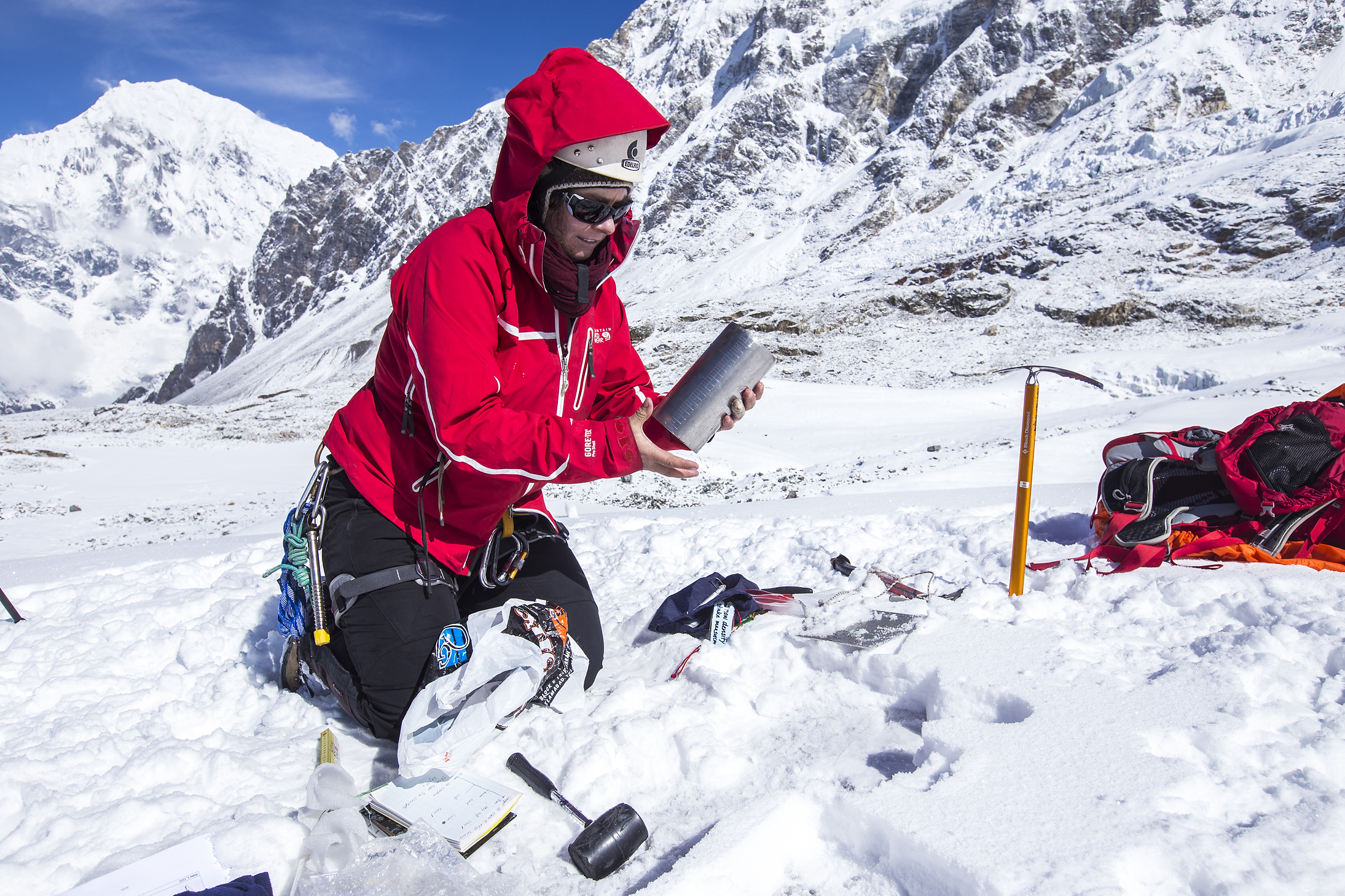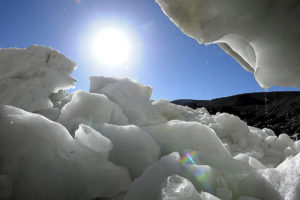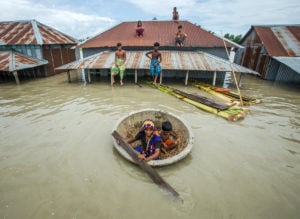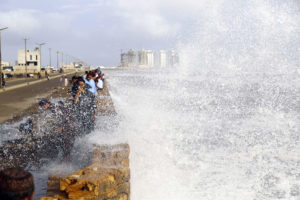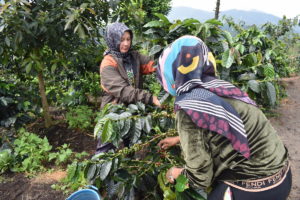The key sentence in the most comprehensive report to date on the Hindu Kush Himalayan “cryosphere”, or icy areas, is that the region is “undergoing unprecedented and largely irreversible changes over human timescales, primarily driven by climate change”.
The assessment, released on 20 June by the International Centre for Integrated Mountain Development (ICIMOD), describes vast changes: glaciers are retreating more quickly, snowfall days are dwindling, permafrost is melting. These will have key impacts on states, societies, and biodiversity.
There are many variations in individual regions and river basins in a region of 4.2 million square kilometres, “spanning 3,500 km in length from Afghanistan in the west to Myanmar in the east, and covering parts or all of Pakistan, India, China, Nepal, Bhutan, and Bangladesh”, but some key lessons are clear. Water availability will peak by 2050, risks of disasters from glacial lake outburst floods (GLOFs), other floods, and landslides – as well as complex disasters combining factors of all of these – will spike, and mountain landscapes will become increasingly fragile.
These are tremendous changes that will not only impact the 240 million people and the biodiversity that survives in this ecological region, but also the 1.65 billion people downstream dependent on the rivers that flow down the Hindu Kush Himalayan (HKH) region.
The “Water, Ice, Society, Ecosystems in the Hindu Kush Himalaya” assessment, known as HI-WISE, is a follow up to the first-of-its-kind assessment of HKH released by ICIMOD in 2019. The HKH region has often been referred to as the biggest “hole” when it comes to assessments by the UN’s climate science body, the IPCC, referring to the lack of data in a region riven by international conflicts.
While the 2019 Himalayan assessment addressed some of these issues, it only did so on data up to 2017. Advances in technology and modelling – as well as the release of heretofore classified satellite data –have made far better data available. These have clarified how quickly and deeply climate change is impacting the Himalayan watershed, fundamentally changing the hydrological systems.
Half or more of Himalayan glaciers set to disappear by 2100
The most significant observed change is how fast the glaciers are receding. In 2000–2009 the pace of retreat was -0.17 metres water equivalent (m w.e.). In 2010–2019, it had increased to -0.28 m w.e., almost doubling. This retreat was greatest for glaciers at lower elevations, and in the eastern parts of the Himalayas, as has long been the case. But one of the key findings of the new report is the disappearance of the “Karakorum Anomaly”.
According to the report, the Karakorum region “showed a slight wastage of -0.09 ± 0.04 m w.e. per year for 2010–2019. These results indicate moderate mass loss of the Karakoram glaciers, especially post-2013 and suggest that the Karakoram Anomaly – anomalous behaviour of glaciers in the Karakoram, showing stability or even growth – has probably come to an end.”
The rate of retreat means that, at the lower levels of global warming of 1.5–2.0˚C above pre-Industrial Age global temperatures, the Himalayan glaciers will lose up to 30–50% of their mass by 2100. With the current policies in place, we are more than likely to breach that level, with Climate Tracker estimating that we will reach 2.7˚C of warming by 2100. This would mean that only 25–45% of glaciers in the HKH region would survive.
The change in glacier mass balance is matched by the decline in snowfall, with annual snow days decreasing by five days a decade across all mountain regions globally, especially at lower elevations. As the mountains warm, instead of snow these areas are getting rain. This has lower impact on the eastern rivers that flow from the HKH region, such as the Ganga, Brahmaputra (Yarlung Tsampo), and the Irrawady, the majority of whose discharge is from rain and springs. But it will have a major impact on the Indus basin, since “meltwater [from glaciers and snow] contributes up to 83% of annual groundwater recharge in the Upper Indus River Basin”.
All sectors of society will feel impact of reduced water flows
Since the contested region of Kashmir, with sections administered by Pakistan and India, falls in the Upper Indus Basin, this may have a major impact on security. Furthermore, both the Pakistan province of Punjab, and the Indian state of Punjab, both considered the “breadbaskets” of the two countries, are critically dependent on the waters of the Indus basin. Even if the water flow continues to increase in the short-term (as more of the glaciers melt), the HI-RISE projection of it declining after 2050 has serious outcomes. By then, India’s population is expected to increase from the current 1.4 billion to 1.67 billion, and Pakistan’s from 240 million to over 400 million.
Lowered water flows will also have key implications for hydropower dams, of which there are 100 already built, and 650 more planned or under construction. Indian plans to make inland waterways major arteries for transport and freight, both in-country and across borders, will also have to deal with the coming crisis – one that European water-based transport is already experiencing.
Without an understanding of managing bio-regions beyond borders, things are bound to become worse, not better
A more immediate problem is that meltwater from glaciers and snows also helps to recharge aquifers that, in turn, recharge the springs on which mountain communities depend. For the 240 million people that reside in the mountainous areas of the HKH, springs are the principal source of potable water for home use and agriculture. It has been known that they have been declining for some time, with “half of the more than three million perennial springs in IHR [Indian Himalayan Region] States … already dried up or become seasonal, resulting in acute water shortages across thousands of Himalayan villages”. For Nepal, much of whose population lives in mountainous areas and relies on springs, this is an imminent threat, as 70% of its springs already showed a decline in water flow by 2021.
Glacier retreat will also visit a large number of disasters on the region, as the ice in the glaciers stabilises the mountains, and glacier melt provides water for flora that hold soil in place. As they melt, the number of glacier lakes is increasing, although on the eastern Himalayan region their numbers have already peaked, while in the western Himalayas they will continue to grow in size and danger until 2050. The combination of unstable mountain terrain and large glacier-fed lakes increases the chances of a combined disaster, one in which GLOF triggers off landslides.
The HI-WISE report notes that, in the face of such impacts, “Local communities are already abandoning their traditional livelihoods and settlements, pointing towards an evident adaptation deficit to cryospheric change”. Without good scientific data, coordinated government response, and an understanding of managing bio-regions beyond borders, things are bound to become worse, not better.
A key threat to biodiversity
While the threat to mountain communities is both visible, and heard, one of the key positives of the HI-WISE report is that it makes the case for biodiversity. We are used to speaking about invasive species – alien animals and plants introduced to an ecosystem unused to them – but with the retreat of the glaciers, the ecosystem itself is moving. As glaciers retreat, they reveal land that was previously inaccessible. At the same time, as temperatures increase the heat moves up the mountains, meaning that whole ecosystems are changing, affecting everything from apple orchards to animal habitats.
Flora and fauna acclimatised to certain climatic conditions will find it difficult to adapt to the fast-paced changes. For example, in Nepal, the rhino population is already struggling with the impact of invasive plants. Furthermore, since rhinos can only cool off by wallowing in muddy ponds, the rising days of dry heat are an existential threat for the large herbivores.
While 40% of the HKH region’s critical biodiversity hotspots fall under some form of government protection or other, changing climatic conditions are likely to lead to shifts in wildlife populations as they seek temperatures they are acclimatised to. This is likely to add further stress to human–wildlife interactions, especially vis-à-vis farmers already struggling with crop loss through changing precipitation patterns and extreme temperatures.
A path towards COP28?
The release of the HI-WISE report comes half a year before the UN climate talks COP28 which are to be hosted by the UAE this year. In January 2023, ICIMOD had been part of an event with the Arctic Circle and the UAE’s Ministry of Climate Change and Environment. The key question was whether the HKH region could learn from the Arctic’s experience in managing its unique, and increasingly endangered, ecosystem. Sultan Al Jaber, the COP28 president, made a personal appearance and stressed that the key goals for the talks would include doubling adaptation funds by 2025, make Loss & Damage funds fully operational, and making the COP more action-oriented for the Global South.
All of these goals would fit in well with the HI-WISE report, but to actually fulfil them, the governments of the eight countries of the HKH region need to cooperate. Given Afghanistan and Myanmar’s isolation, Pakistan’s political and economic crises, India’s difficult relations with China and Pakistan, this seems like a large ask. Additionally, Pakistan, Bangladesh and India will be in various stages of preparing for, holding, or dealing with the aftermath of national elections. But the fact that scientists involved in the report come from across the eight countries in question shows that the potential for cooperation exists, if only political leaderships choose to act on it.
